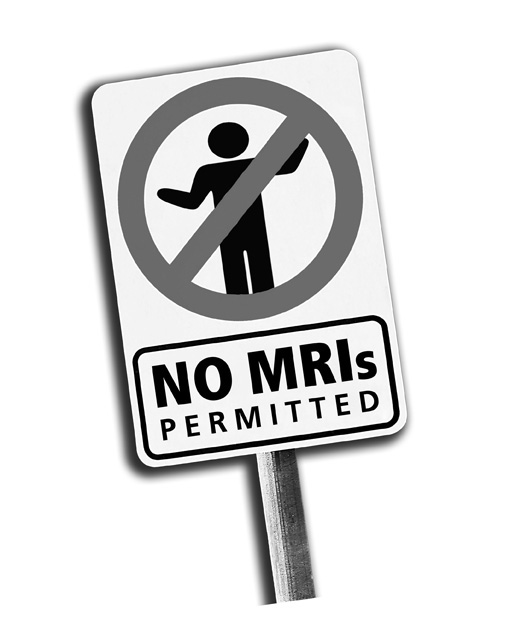Mid-Atlantic Health Law TOPICS

No MRIs Allowed
A version of this article was published in The Daily Record on September 26, 2011.
Many Marylanders are accustomed to obtaining necessary radiology services, including MRIs and CTs, conveniently at their orthopaedic surgeon's office, notwithstanding that, since at least 2006, the Maryland Attorney General and the Maryland Board of Physicians have both declared that, to avoid potential overutilization, orthopaedic surgeons may not legally refer their patients to MRIs or CTs that they own and operate in Maryland.
Maryland's highest court has recently affirmed the Board's position in this regard, meaning that the delivery of MRI and CT services, as well as radiation therapy services, will now change dramatically in Maryland. 
A. Background
Among other things, Maryland's Patient Self-Referral Law (the Act) prohibits a health care practitioner from referring a patient to an entity with which the practitioner or the practitioner's immediate family has an ownership interest, unless one of several exceptions apply.
Three of those exceptions include: (1) referrals between members of a group practice (the Group Practice Exception); (2) referrals where the referring practitioner owns an interest in an entity that will perform health care services, but the practitioner will personally supervise or perform the health care services; (the Supervision Exception); and (3) referrals for in-office ancillary services when the referring practitioner or a member of the practitioner's group practice personally furnishes or supervises the ancillaries, and certain billing requirements are met (the Ancillaries Exception).
For non-radiology practices, the Act specifically states that MRI services, CT services and radiation therapy services are not "ancillaries," and are, therefore, not included in the Ancillaries Exception.
For orthopaedic groups and other group practices that provide CT, MRI or radiation therapy services, this definitional exclusion prompted the question: may a health care practitioner legally refer to the practitioner's own MRI, CT or radiation therapy facility under the Group Practice Exception or the Supervision Exception, even if the referral is specifically excluded from the Ancillaries Exception?
Fundamentally, do the exceptions to Maryland's self-referral ban overlap, such that a referral can come under multiple exceptions? Or, are the exceptions exclusive of each other, meaning that, since MRI, CT and radiation therapy services are excluded from the Ancillaries Exception, MRI, CT and radiation therapy services cannot fall under the other two exceptions?
B. The Court of Appeals Decision
This January, the Court of Appeals, Maryland's highest court, answered these questions in Potomac Valley Orthopaedic Associates, et al. v. Maryland State Board of Physicians, et al. The court held that the exceptions do not overlap, and, therefore, the Act prohibits non-radiologists from referring patients for CT, MRI or radiation therapy services when the referring practitioner has an ownership interest in the entity providing such services.
The case originated in 2006, with a proceeding before the Board of Physicians, initiated by various insurers. The Board held that the Act banned such referrals, invoking a previous opinion of Maryland's Attorney General. (Interestingly, the Board's 2006 decision permitted non-owner employees of a group practice to refer patients to their employers for MRI, CT or radiation therapy services, if certain conditions are met.)
The Board reasoned that, if a physician owner of a group practice could self-refer MRI services, for example, under the Group Practice Exception, then the Group Practice Exception would defeat the Maryland General Assembly's clear intent to prohibit the self-referral of MRI services, as evidenced by the exclusion of MRI services from the Ancillaries Exception.
Potomac Valley Orthopaedic Associates and others protested the Board's decision, and unsuccessfully argued that the Board failed to apply the plain meaning of the Group Practice Exception and the Supervision Exception. These complaining groups argued to no avail that statutes often contain overlapping provisions, and the Board should not effectively rewrite the statute based on a theory of what the General Assembly might have meant.
C. Interpretative Implications
The Board's interpretation of the Act, which Maryland's highest court has now affirmed, has three significant consequences that affect how all health care practices must evaluate their self-referrals.
First, the Ancillaries Exception now only protects the referral of diagnostic services, other than MRIs, CTs and radiation therapy.
Second, the Group Practice Exception now only protects in-group referrals for non-diagnostic services.
Third, the Supervision Exception now only covers referrals outside of a group practice, such as a surgeon's referral to a separately organized ambulatory surgery center.
D. Practical Consequences
Non-radiology physician groups that own or lease MRIs and CTs, or provide radiation therapy services, must now modify their practices to comply with the court's decision.
Some groups may mothball their equipment or attempt to sell and move their equipment. Others may try to sell or lease their equipment to a radiology group which might be willing to operate the MRI, CT or radiation therapy services on-site.
Groups that did not comply with the Board's decision in 2006 also face other concerns. Since the Act bans billing any party for services rendered in violation of the Act, physician groups who owned and provided MRI, CT or radiation therapy services from 2006, until the court's decision, may face suits from patients or insurers seeking to claw back prior payments, even though the services provided may have been reasonably priced and medically necessary.